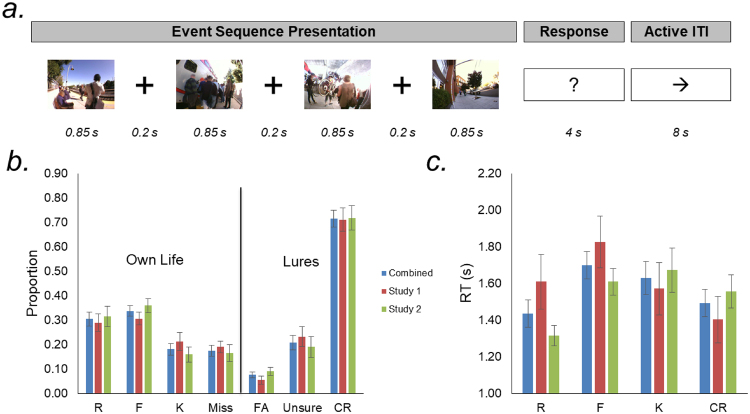Figure 1.
Experimental design and behavioral data. (a) On each trial, participants viewed a sequence of 4 photographs depicting the temporal unfolding of an event (note: individuals’ faces and bodies were not blurred in the actual stimulus sets). Immediately thereafter, participants made a button-press response indicating their memory for that event. During the 8 s inter-trial interval, participants were tasked with judging the right/left direction of a series of five arrows. (b) Proportional responses for distinct memory categories (R – recollection, F – familiarity, K – know, FA – false alarm, and CR – correct lure rejections). (c) Reaction times for memory categories entered into fMRI analysis. F and K responses tended to exhibit the slowest RTs.

